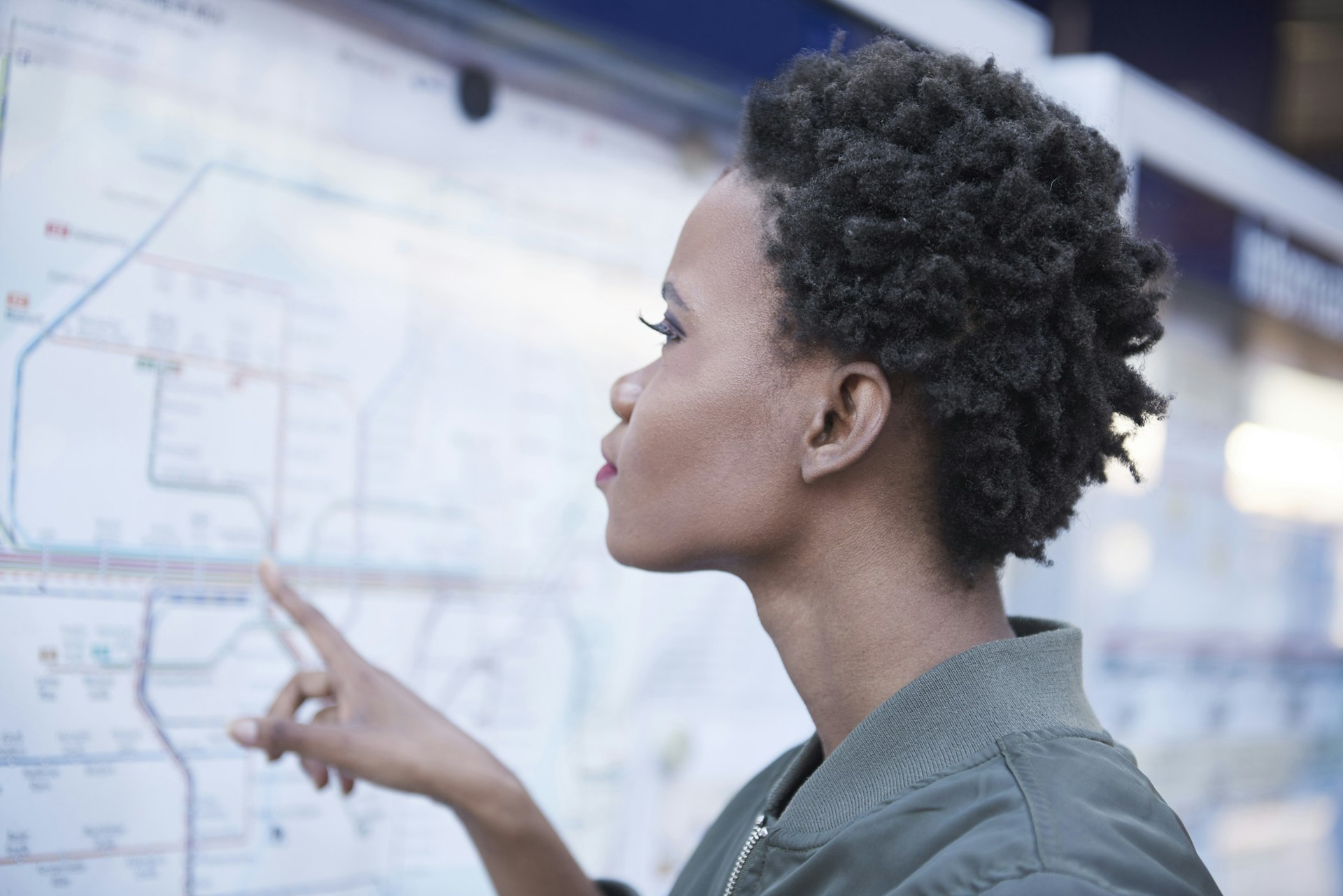Thanks to a great public transport system, an extensive bike lane network and a growing number of shared-mobility initiatives, getting around Munich is not only easy, it’s enjoyable. While the Bavarian capital is known for its cars – it’s the birthplace of German auto behemoth BMW – they are often not the best option because of traffic and few parking spaces.
Munich’s old town and much of the center can be explored on foot, with nearby neighborhoods and large parks likely to further increase your step count. Here’s how to find your way around Munich.
See more of Munich by train, tram or bus
Munich’s public transport system will reliably get you from A to B – most of the time. The U-Bahn (subway) connects many places in the city, with trams and buses helping to fill in the gaps. Eight S-Bahn (urban rail) lines also run through the center before heading out to suburbs and other areas beyond the city limits.
As long as you keep traveling in the same direction, tickets can be used interchangeably on all of these modes of transport within certain time frames. Prices and conditions are based on different zones, but most sights and places of interest are in the central zone, known as Zone M.
A single ticket (Einzelfahrkarte) in Zone M costs €3.70 and is valid for two hours in one direction, while shorter journeys cost less and are valid for one hour. While this might initially sound confusing, a lot of helpful information is available on the MVV website.
You won’t find any ticket barriers or manual checks in stations, but you might be subjected to random spot checks while traveling. Inspections are carried out by plain-clothed staff and normally begin once you are already moving, meaning there’s no escape from the hefty fines.
Tickets are available from machines at the station, and where these don’t exist, which is often the case at bus and tram stops, you can buy them on board. Be aware that some machines are cash only, and some are coin only. If you are out of small change, you can also buy tickets on the MVV app – you’ll need to register first and have your ID on you. Remember to validate (entwerten) your ticket if necessary using the blue boxes you’ll see in stations or on buses and trams.
Choose the right transport pass for you
If you take more than two single trips in a day, it’s worth buying a day ticket (Tageskarte), available for individuals or groups. And if you’re staying in town for longer, the IsarCard, valid for a week or a month, could help stretch your budget further. A stripe ticket (Streifenkarte) is a good option if you only plan to use public transport sporadically during your trip.
There are also tourist deals that combine unlimited public transport with reduced or free admission to many sights and attractions. The Munich Card gives discounts to around 100 sights and tours, while the Munich City Pass includes free admission to 45 sights.
Scoot your way from A to B
E-scooters have been legal in Germany since 2019. Reaching maximum speeds of 20 km/h (12.5 mph), they are a popular way to whizz around town, particularly among the younger demographic. With several different operators in the city, the scooters are readily available and easy to hire. Tier and Voi are both official partners of the Munich Transport Company (MVG) and can be located using the new MVGO app (along with other nearby transport options). Both suppliers also have their own individual apps.
The minimum age for drivers is 14, meaning no driver’s license is required, but a number of regulations are in place. Riders should stick to bike lanes where available, and roads when not. Sidewalks and pedestrianized areas are off limits. Alcohol consumption rules are the same as those for cars, so be careful not to drink and scoot. Helmets are optional but highly advisable.
Electric moped-sharing schemes, such as Emmy, are also available, with helmets provided.
How to pay for your e-scooter
There’s normally a fee to release the e-scooters, and then you pay by the minute. Some operators also offer day passes, which cost around €10 and give you a certain amount of time free for each ride.

Get around like a local on two wheels
Cycling is one of the best ways to get around Munich. The city has an extensive bike lane network, including several routes through parks and along the river. Many locals favor this mode of transport, opting for two wheels to commute to work, head out for dinner or ferry around kids.
You can rent bikes, including increasingly popular e-bikes, for your whole stay or try out some bike-sharing initiatives. Operators include Deutsche Bahn (look out for red and silver bikes) and MVG (silver and blue bikes). Rather than a system of docking stations for collection and drop-off, it is possible to leave them parked on the street once you’re done. While this is very convenient, it can also sometimes mean that the bike you spotted on your app is in fact hidden in someone’s backyard.
Driving in Munich is best avoided
Driving in Munich is possible but not really necessary. It’s sometimes no quicker than taking public transport or even going by bike. The traffic jams are notoriously bad, and finding somewhere to park can test your patience. If you’d like to explore beyond the city limits, you can rent cars from a number of places in the city and at the airport. Alternatively, for short journeys, you can sign up for a car-sharing scheme, such as MILES (where you pay by kilometer) and SHARE NOW (which works on a time basis).

Explore the city’s neighborhoods on foot
Munich is an extremely walkable city. The old town and surrounding areas can easily be explored on foot, as can all of the city’s parks, and the main shopping area is completely pedestrianized. Several neighborhoods and districts, such as Haidhausen, Maxvorstadt and Isarvorstadt, are close to the center, meaning you can easily extend your walking tour. Regardless of how you get there, Munich’s inner-city neighborhoods are made for strolling around.
Choose comfort over cost with a taxi
Munich’s cream-colored taxis are abundant. You can hail one on the street if the light is on, head to a taxi stand or use an app, such as FREE NOW, to organize a ride. While convenient, taxis certainly aren’t the cheapest way to get around. Tariffs are strictly regulated by the city and cannot be exceeded or undercut. Expect a standard minimum fare (currently just under €5) and rates based on the distance traveled.
Accessible transportation in Munich
Munich’s public transport system has a good reputation in terms of accessibility. All of the U-Bahn stations have barrier-free access to the platforms, as do around 85% of S-Bahn stations. More than 90 stations have been specially designed for passengers with mobility issues.
Should you require assistance when boarding or exiting the S-Bahn or U-Bahn, wait near the front carriage so the driver can see you. On buses, use the red button near the middle doors for assistance.
For full details, check out the barrier-free access section on the MVV website, which includes a map outlining the services available at each station.
Learn more about accessible travel options by downloading Lonely Planet’s free Accessible Travel guide.
